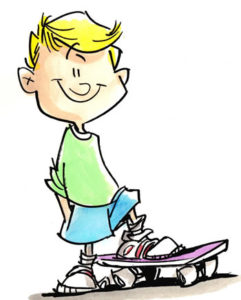
01 Oct FAQs About Cognitive Behavioral Principles Used in this Program
You may be asking yourself: “What are cognitive behavioral principles as described in this program?

The second principle: According to Dr. David Burns, researcher and author in the mental health field, many of us are guilty of unreasonable or irrational thoughts. Dr. Burns offered an insightful and sophisticated list of unhelpful thoughts that he labeled cognitive distortions. It is suggested that engaging in these distortions cause a person to reinforce negative thoughts or emotions.
Now, let’s look at the child’s thought in the above example. If you recall, the child thinks, “I got the worst grade in the class”. This thought resulted in his feeling sad, putting his head down on the desk and leaving everyone around him wondering what’s wrong.
- How can we change how the child feels and what happens with what we now know? The answer is by changing his thoughts . . .
- So, going back to our example, what if instead the child thought, “Maybe I did o.k.”. He may feel hopeful which may lend itself to his participating more in class.
- How do we help your child achieve this? By using idioms and cartoon like illustrations, we’ve created a very kid friendly way of teaching these cognitive behavioral principles to children.
Note: Becoming aware of unhelpful thoughts and then challenging them will not happen overnight. To this end, it is important for those involved to reinforce the principles outlined in this program as often as possible.
Some children may have more difficulty letting go of their unhelpful thoughts. In such cases, it may be beneficial to consult with a therapist who would be able to provide you and your child with additional support and guidance.




